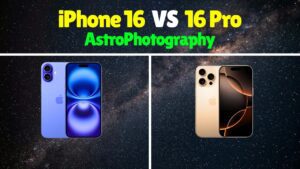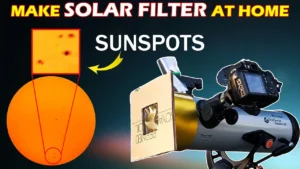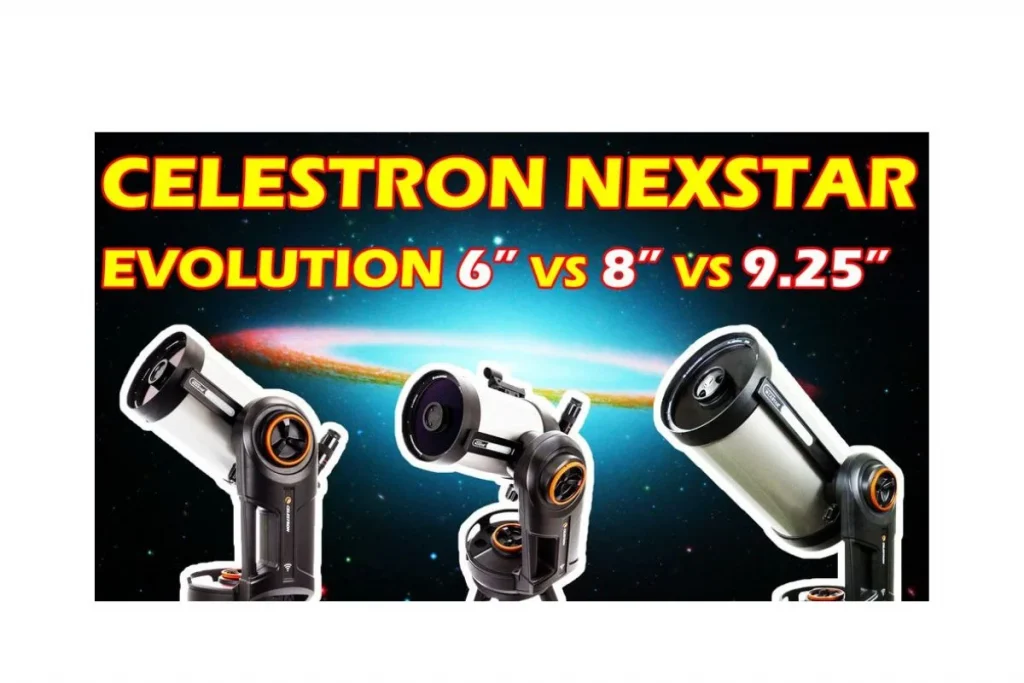
Celestron is one of the most popular companies in manufacturing telescopes. They have telescopes in all ranges from beginners to advanced levels of astronomers. Before, we saw the Celestron NexStar SLT series & the Celestron NexStar SE series. You might have heard about the Celestron NexStar Evolution series telescopes. This Evolution series has three types of apertures. Celestron NexStar Evolution models include the 6-inch, 8-inch, and 9.25-inch versions.

Different series of Celestron
These different series of telescopes are for different levels of astronomers. Celestron NexStar SLT series is for beginner to intermediate levels of astronomers. Celestron NexStar SE series is for the beginner to advanced levels of astronomers. The Celestron NexStar SE series is an upgrade from the Celestron NexStar SLT series. The purpose of the SE series is to serve a wider variety of users.
If you want high-quality results from your telescope. Then Celestron NexStar Evolution is for you. It is for intermediate to advanced levels of astronomers. Celestron NexStar Evolution series is an upgrade from the NexStar SE series. The telescopes in this series start with much larger apertures compared. Celestron NexStar Evolution Series has 4 telescopes. There is a 6-inch telescope, an 8-inch telescope, an 8-inch edge telescope, and a 9.25-inch telescope.
Based on years of customer feedback, Celestron designed this series. All NexStar Evolution series telescopes are Schmidt Cassegrain-type telescopes with computerized go-to mounts. They all come with the data of 40,000 celestial objects.
The mounts which come with the evolution series are sturdier and better. These mounts can work without power & have a built-in battery in the base of the mount. The battery lasts for about 10 hours. It will last throughout your stargazing night. So, you will not need an external power supply. All these telescopes have built-in Wi-Fi. You can control it with the Celestron sky portal app on your phone.
As these telescopes have bigger apertures the light gathering on them is excellent. The optics of the evolution series has Star bright XLT coatings. It transmits 97% of the light to the eyepiece. You get much brighter and sharper images with these telescopes. These telescopes are very easy to set up.
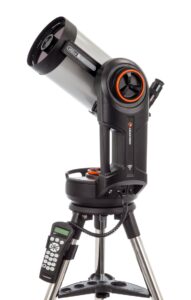
What does Celestron NexStar Evolution 6-inch model offers you?
This is the basic aperture size in this series. The telescope has a focal length of 1500mm and a focal ratio of 10. The total weight of the telescope is about 38lbs. It has a narrow field of view which is better for the bright objects in the sky. That’s why you can see clear & sharp images of planets. With this telescope, you can see Jupiter and its moons. Saturn with Encke division of its rings.
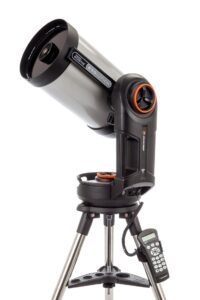
What Celestron NexStar Evolution 8-inch model offers you?
In the 8-inch size, there are two models in this series. One is Evolution 8-inch and the other is Evolution 8-inch Edge HD. The difference between the two is the design of the optical tube. Evolution 8-Edge HD has an aplanatic catadioptric optical tube assembly.
As it is an aplanatic optical tube, it eliminates spherical and chromatic aberrations. So views through it are flat and distortion-free across the entire field of view. It also has StarBright XLT multi-coating system. It gives you better super sharp images compared to the Evolution 8-inch telescope. That’s why Evolution 8 Edge HD is more expensive than Evolution 8.
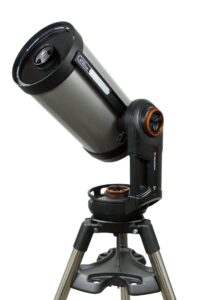
What does Celestron NexStar Evolution 9.25-inch model offers you?
This is the biggest aperture telescope in this series. It is also a very expensive telescope. The telescope has an aperture of 234mm. Its focal length is 2350mm and the focal ratio is 10. The total weight of the telescope kit is around 63lbs. This 9.25-inch aperture is more than enough for viewing bright Solar System objects. As the telescope has a bigger aperture it collects 150% more light than the 6-inch model. So deep space stargazing experience on this telescope is amazing.
Which one should you buy?

All these are premium telescopes. So they are expensive. You can buy any of the Celestron NexStar Evolution series telescopes. If you have a budget. Instead of the Celestron NexStar SE, you can buy Celestron NexStar Evolution. For example, if you are thinking of buying Celestron NexStar NexStar 6-SE. And, if you have the budget then you can go for the Celestron NexStar Evolution 6-inch telescope. The moving parts in the telescope such as gears are of excellent quality. If you take good care of your telescope, then these telescopes will serve you long-term. It will definitely serve you for around 9-10 years.
Besides, any telescope from the evolution series is ideal for astrophotography. The features of all these telescopes improve their usability and image quality. This makes your astrophotography experience easier.
NexStar Evolution 6″ | NexStar Evolution 8″ | NexStar Evolution 9.25″ | |
Aperture | 150mm (6″) | 203mm (8) | 235mm (9.25″) |
Focal Length | 1500mm (59″) | 2032mm (80″) | 2350mm (80″) |
Focal Ratio | f/10 | f/10 | f/10 |
Optical Design | Schmidt-Cassegrain | Schmidt-Cassegrain | Schmidt-Cassegrain |
Weight | 38 lbs (17.2 kg) | 40.5 lbs (18.3 kg) | 62.5 lbs (28.4 kg) |
What can you see | Jupiter & its moon, Saturn with Enke Division | Encke Division in Saturn’s rings, cloud bands on Jupiter, geographic features on the surface of the Moon,Deep space objects | Everything which you can see with 6″ & 8″ but with great details, Faint distance Deeps space objects |
PRICE |
So this is what the Evolution series offers you. We publish these comparisons so that you can make a better buying decision. If you are looking for a telescope specifically for astrophotography then you need to check this article. You can also find the best suitable telescope for you with our telescope suggestion tool.


